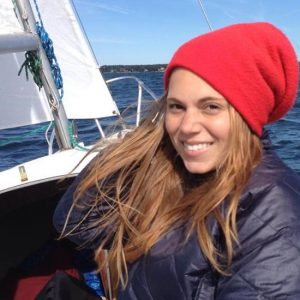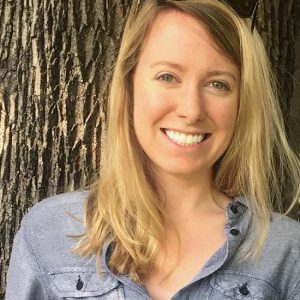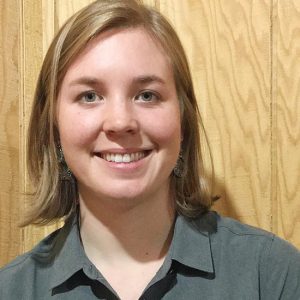The Alaska Sea Grant State Fellowship entered its fourth year this fall.
The program offers participants one-year placements within government agencies and other host organizations so they can acquire on-the-job experience in the planning and implementation of marine resource policies and programs in Alaska. Their supervisors provide mentorship and opportunities for involvement in substantive issues that contribute to the fellow’s professional goals.
The highly successful program has helped launch new careers and professional directions. For some recent examples, we checked in with our 2017 fellows.

Sara Cleaver
Sara Cleaver spent her fellowship at the North Pacific Fishery Management Council. A graduate of Duke University, Cleaver worked on the Bering Sea Fishery Ecosystem Plan and collaborated on an environmental assessment and regulatory impact review allowing a new gear type for commercial halibut fishing in the Bering Sea. She also helped create a book of amendment summaries for the Gulf of Alaska Groundfish Fishery Management Plan.
“I enjoyed working with a large group of agency employees to understand potential environmental impacts as well as talking with industry representatives to understand the perspective of many stakeholders, and then making sure all of this information was communicated effectively to decision makers,” said Cleaver, describing her involvement with one of the council’s regulatory actions.
Upon the successful completion of her fellowship, Cleaver accepted a two-year contract as a fishery analyst with the council.

Danielle Meeker
Danielle Meeker served as a fellow in the Office of former Lieutenant Governor Byron Mallott in Juneau. She focused on designing and developing the first State of Alaska Climate Change Strategy, which has been in progress since October 2017. She also managed and helped to design the governor’s climate change website.
“My biggest accomplishment was working as half of our two-person climate policy team to draft Administrative Order 289, facilitate the work of the Climate Action Leadership Team, and engage with state agencies and a wide range of stakeholders to advance the state’s response to climate change. However, during my time in the office, I prepared briefings and recommendations on topics as far-ranging as Alaska’s priorities for the 2018 Farm Bill to the population and migration of the Porcupine caribou herd to the need for more electric vehicle charging infrastructure across the state.”
Meeker recently accepted a full-time policy and program analyst position in the lieutenant governor’s office.

Kim Ovitz
Kim Ovitz was placed with NOAA Fisheries, Protected Resources Division, in Anchorage. Her primary role was to assist with the management and outreach needs of Alaska’s endangered Cook Inlet beluga whale population. Ovitz relocated to Kenai for two months where she conducted daily beluga monitoring sessions and anthropological interviews with long-time area stakeholders.
“My biggest accomplishment was designing and facilitating a mixed-methods and multi-disciplinary research effort which examined beluga distribution and human activities occurring in the lower Kenai River,” Ovitz said.
Ovitz conducting a daily beluga monitoring session on the Lower Kenai River.
“This was a particularly rewarding experience as I had the opportunity to connect with and learn from locals who possess immense knowledge of the Kenai River ecosystem. The results of this study ultimately enhanced our understanding of springtime beluga distribution in the lower Kenai River and helped to identify stressors that may shape belugas’ access to this critical habitat,” she said.
Since completing her fellowship in August, Ovitz headed to Flagstaff, Arizona, to assist the U.S. Fish and Wildlife Service in sampling efforts of the endangered humpback chub population in the Little Colorado River at the bottom of the Grand Canyon.

Genevieve Johnson
Genevieve Johnson completed her fellowship at the NOAA Alaska Fisheries Science Center in Juneau.
In June she presented her work on juvenile chum salmon at the 2018 Coastwide Salmonid Genetics Meeting in Mukilteo, Washington. Johnson also helped the genetics department of her host organization set up its first DNA sequencing run on its new MiSeq instrument.
“That was an exciting accomplishment,” said Johnson. “I am grateful for the opportunities the fellowship afforded me to meet and collaborate with people in my field.”
Johnson is now back at UAF finishing her master’s degree in fisheries and working as a teaching assistant in ichthyology, the branch of zoology that focuses on fish. She plans to defend her thesis later this semester. She focused on the genetic population structure of Tanner crab in Alaska.
Alaska Sea Grant is excited to see where these former fellows go and will continue to keep an eye on the work they are doing to help shape marine policy for our state.




